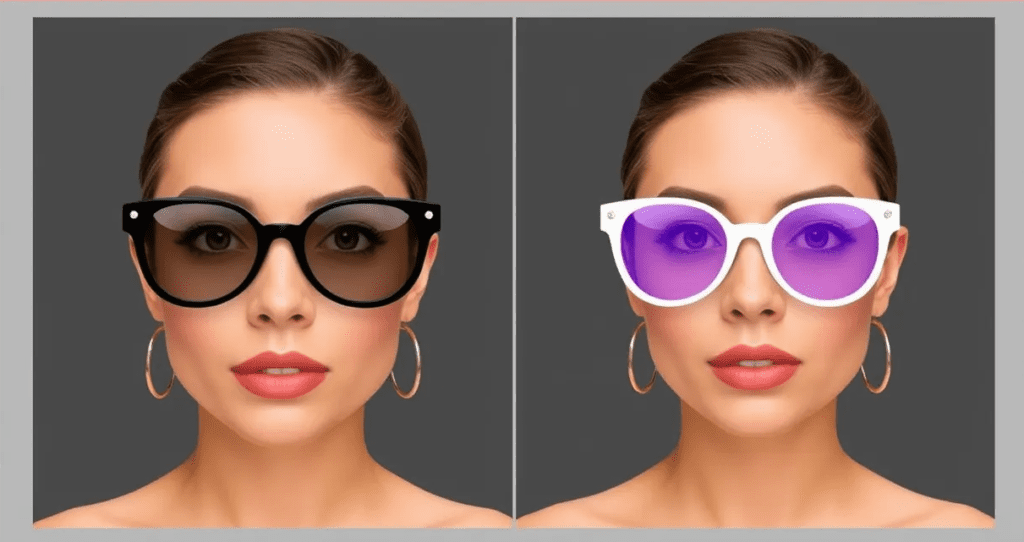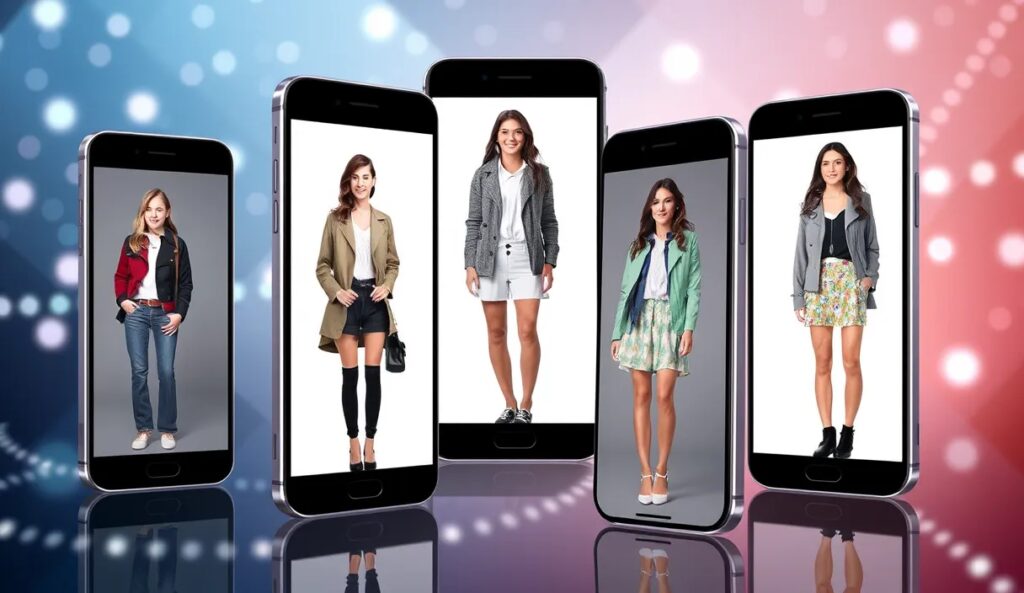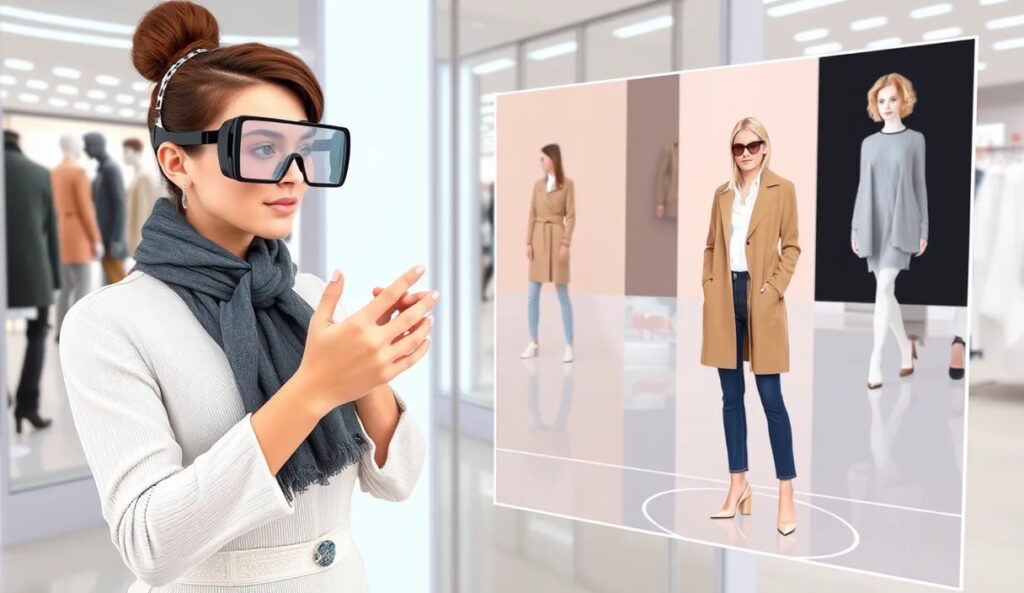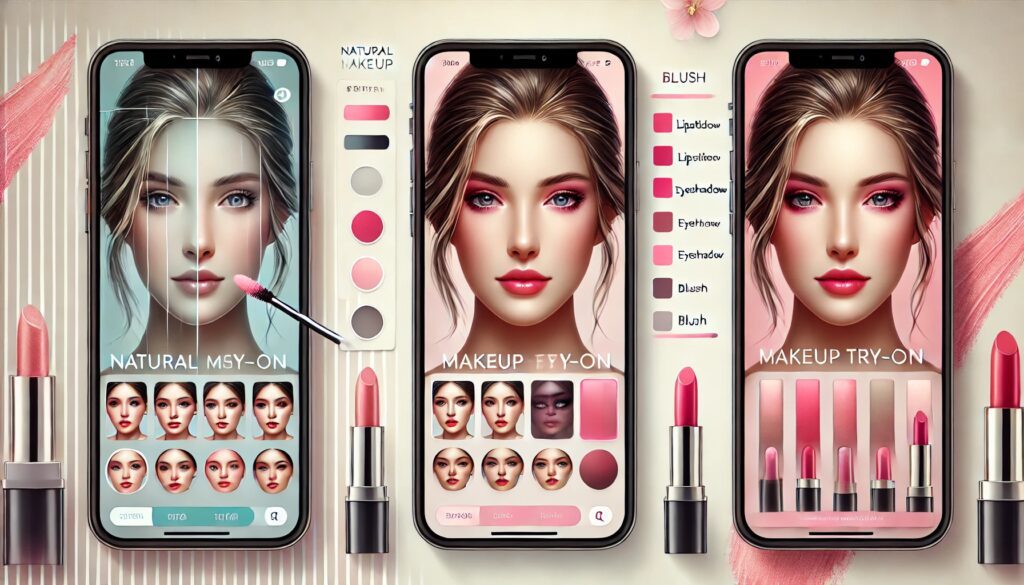
Online shopping is no longer just about scrolling through product images. The merging of augmented reality (AR) and artificial intelligence (AI) is reshaping the way we browse and buy.
From virtual try-ons to personalized recommendations, the experience is becoming more immersive and tailored than ever. Here’s how these technologies are transforming the landscape.
The Magic of Virtual Try-Ons
How AR Brings Products to Life
AR bridges the gap between online and offline shopping. By superimposing digital items into the real world, customers can “see” how clothes, makeup, or furniture would look before they buy.
- Imagine trying on a pair of glasses or a dress through your phone’s camera. That’s AR in action.
- Apps like IKEA Place let users visualize furniture in their homes with astonishing accuracy.
This hands-on experience reduces uncertainty, leading to fewer returns and happier buyers.
AI-Enhanced Fit and Style Recommendations
AI fine-tunes the virtual try-on process by learning your preferences and sizing needs.
- Algorithms analyze user data to recommend clothing that suits your body type.
- AI systems can even predict how certain fabrics or colors will look on your skin tone.
With these insights, brands create a seamless shopping journey that feels personalized and reliable.

Boosting Confidence with Real-Time Feedback
Instant Styling Advice
Virtual try-ons don’t just let you see a product; they guide your styling choices.
- AI tools like L’Oréal’s Modiface offer instant makeup tutorials based on your chosen look.
- Fashion brands use AR mirrors to suggest complementary accessories in real-time.
This adds a layer of engagement, turning shopping into an interactive, confidence-boosting experience.
Social Sharing for Crowd Opinions
Love getting opinions from friends? AR and AI make it easy.
- Snap a virtual photo of your try-on and share it for feedback before hitting “buy.”
- Platforms like Snapchat and Instagram integrate AR shopping filters to let you try and share effortlessly.
Social approval is just a click away, and it’s driving higher conversion rates.
Elevating Accessibility for All
Breaking Down Barriers
AR and AI are making shopping more inclusive.
- Size-inclusive tools allow users to visualize items on models that match their shape.
- For differently-abled individuals, AR ensures they can explore products without visiting a store physically.
This democratizes the shopping experience, ensuring everyone feels catered to.
Bridging Cultural Gaps
AI-driven translation tools embedded in AR apps make international shopping more intuitive.
- Virtual try-ons can adapt to regional styles, preferences, and sizing standards.
- Multilingual interfaces make it easier for global customers to interact with brands.
This opens up opportunities for businesses to scale across borders seamlessly.
Reducing Returns and Environmental Impact

Smarter Shopping Decisions
Returns are a major challenge for online retailers, but AR and AI are turning the tide.
- Accurate fit simulations reduce the likelihood of items being sent back.
- Users are more likely to buy what they genuinely love and need.
This not only saves money but also helps the environment by cutting down on shipping and waste.
Supporting Sustainable Choices
AI is steering consumers toward greener choices.
- Some apps recommend eco-friendly products based on user habits.
- Others highlight brands with sustainable practices right within the shopping experience.
The result? A more conscious shopping culture.
Why Brands are Embracing AR and AI
Boosting Sales with Immersive Technology
Brands are leveraging AR and AI to drive more sales and enhance customer satisfaction.
- Virtual try-ons create a “wow factor” that captivates shoppers.
- Personalized recommendations encourage customers to add more items to their carts.
This tech doesn’t just sell products; it builds trust and loyalty, ensuring customers come back.
Cutting Costs with Efficient Returns Management
Returns are expensive, but AI-powered AR reduces this burden by ensuring better purchasing decisions.
- Retailers save on shipping and restocking fees when customers pick the right items.
- Fewer returns mean happier customers and more efficient operations.
This cost-saving potential has led to widespread adoption among e-commerce giants.
The Role of AR and AI in Marketing
Engaging Campaigns with Virtual Experiences
AR and AI breathe life into marketing campaigns.
- Brands like Gucci and Nike have launched AR filters on Instagram for users to try on products virtually.
- These campaigns create buzz, drawing new audiences to their platforms.
Interactive content is proving to be more memorable and shareable than traditional advertising.
Data-Driven Insights for Smarter Strategies
AI isn’t just about enhancing the shopping experience—it’s a goldmine for data.
- AI tools analyze try-on data to understand customer preferences and predict trends.
- Retailers use these insights to refine their marketing and inventory strategies.
This results in more targeted ads, better-stocked shelves, and happier customers.
Future Trends in AR and AI Shopping

The Rise of Virtual Shopping Worlds
Imagine stepping into a virtual mall from the comfort of your living room.
- AR and AI are building fully immersive shopping environments where you can browse, try, and buy in 3D.
- These virtual spaces could revolutionize how we shop for everything from groceries to luxury goods.
As the metaverse gains traction, this trend will only grow.
Advancing AI for Deeper Personalization
AI is evolving rapidly, offering even more tailored experiences.
- Voice-enabled shopping assistants could combine AI and AR to guide you through the try-on process.
- Predictive algorithms may soon anticipate your needs before you even realize them.
The future is all about making shopping faster, easier, and more enjoyable.
Challenges and Ethical Considerations
Addressing Privacy Concerns
With great technology comes great responsibility.
- The data collected by AI and AR tools raises concerns about how it’s stored and used.
- Brands need to ensure transparent practices to maintain trust.
Educating consumers about privacy policies is key to addressing these fears.
Avoiding Overreliance on Technology
While AR and AI make shopping convenient, there’s a risk of alienating customers who prefer traditional methods.
- Companies should balance digital innovations with human touchpoints.
- Offering multiple shopping options ensures inclusivity for all.
This mindful approach can prevent technology from becoming a barrier instead of a bridge.
The Global Impact of AR and AI in Retail
Expanding Markets in Emerging Economies
AR and AI are breaking barriers for retailers in developing markets.
- Mobile-first technologies make it easier for brands to reach customers with limited internet access.
- Affordable AR-enabled apps are unlocking new opportunities for small businesses.
This levels the playing field, making global commerce more accessible.
Driving Competitive Advantage
In the saturated e-commerce space, AR and AI set brands apart.
- Companies that adopt these tools early enjoy a significant edge.
- Enhanced customer experiences translate to higher retention and increased market share.
The competitive pressure is pushing more retailers to invest in this tech.
Conclusion: Empowering Consumers with AR and AI
The fusion of augmented reality (AR) and artificial intelligence (AI) is redefining online shopping, delivering transformative benefits to consumers. This isn’t just about convenience—it’s about creating an engaging, tailored experience that feels as close to in-store shopping as possible.
Why Shoppers Should Be Excited
- Try Before You Buy: Virtual try-ons let you see how clothes, makeup, or furniture fit your style, body, or space—all without leaving home.
- Personalized Choices: AI analyzes your preferences to recommend products that match your needs, saving you time and energy.
- Confident Purchases: No more guessing sizes or styles. With precise fit and style simulations, you can shop smarter and avoid buyer’s remorse.
Saving Time and Money
- Fewer Returns: Accurate visualizations mean fewer ill-fitting purchases, cutting down the hassle of returning items.
- Exclusive Deals and Offers: AI-powered systems often flag discounts or personalized promotions that match your shopping habits.
- Shop Anytime, Anywhere: Whether it’s midnight or during a busy lunch break, you can explore a virtual store at your convenience.
Elevating the Fun Factor
- Interactive Shopping: From sharing your virtual looks on social media to testing new styles with friends, AR makes shopping a delightful activity.
- Explore New Brands: AI’s recommendations introduce you to products and companies you might not have discovered otherwise.
Contributing to a Sustainable Future
Shopping smarter doesn’t just benefit your wallet—it’s better for the planet too. By reducing returns and steering toward eco-friendly products, AR and AI help you make choices that align with a sustainable lifestyle.
The future of online shopping is one where convenience meets personalization, and technology enhances, rather than complicates, your life. Whether you’re upgrading your wardrobe or redecorating your home, AR and AI ensure you shop with confidence, efficiency, and joy.
For more insights on cutting-edge retail tech, check out this guide to AI in retail or explore innovations in AR applications for e-commerce.
FAQs
Can AR and AI help me shop sustainably?
Yes! AI can recommend eco-friendly brands or products and suggest alternatives that align with your values. For instance, some fashion apps highlight clothing made from sustainable materials or produced by ethical companies. Coupled with AR’s ability to reduce returns, this technology promotes a more environmentally conscious shopping experience.
What devices do I need to use AR and AI shopping tools?
Most AR and AI tools work on smartphones, tablets, or computers. For example, all you need is a smartphone to access virtual try-on features through apps like Snapchat or retailer websites. High-end AR experiences, like virtual showrooms, may work best on newer devices, but they’re increasingly accessible to everyone.
Is this only for fashion and beauty products?
Not at all! AR and AI are branching out into home goods, electronics, and even food. Companies like Home Depot use AR to let customers see how tiles or paint colors look in their homes. Meanwhile, grocery delivery services employ AI to suggest recipes based on your shopping list.
Can AR and AI tools be used offline?
Some AR features, like AR mirrors in stores, are designed for physical retail spaces. For instance, brands like Adidas and Ralph Lauren use AR kiosks in stores to enhance the in-person shopping experience. These tools merge the best of both worlds, offering digital convenience alongside traditional shopping.
Are virtual try-ons accurate enough to trust?
While virtual try-ons aren’t perfect, they’re remarkably close! Advanced AR tools consider real-time measurements, lighting, and angles to provide realistic results. For example, Nike’s AR-powered app scans your feet to recommend the perfect shoe size, boasting impressive accuracy that rivals in-store fittings.
Do AR and AI tools support size inclusivity?
Yes, and they’re improving rapidly. Many tools now allow users to see items on models of different shapes, sizes, and heights. For instance, ASOS’s See My Fit feature shows clothing on diverse body types, ensuring everyone can visualize how the items will look on them.
Can these technologies help with gift shopping?
Definitely! AI can analyze your browsing habits or preferences to suggest thoughtful gifts. For example, Amazon’s recommendation engine tailors gift ideas based on a recipient’s wishlist or past purchases. AR tools can also simulate how a gift—like a piece of jewelry—might look when worn, helping you make confident decisions.
Are these technologies suitable for older or less tech-savvy users?
Yes! Many platforms focus on making AR and AI tools simple and intuitive. For instance, Lenskart’s virtual try-on for glasses requires just a selfie, making it accessible for users of all ages. Tutorials and step-by-step guides are often built into these apps to ensure they’re easy to navigate.
Can AR help with interior design or home renovations?
Absolutely! AR is a game-changer for visualizing home projects. Apps like Houzz and Home Depot’s Project Color let you see how paint, flooring, or furniture will look in your space. Similarly, Lowe’s Holoroom allows you to design entire rooms virtually, giving you confidence before making big decisions.
How are AR and AI impacting social shopping?
AR and AI make shopping more interactive and social. Platforms like Snapchat and Instagram offer AR filters to “try on” products and share the results with friends for feedback. For example, Dior’s AR filter lets users experiment with sunglasses and get real-time opinions from their followers.
Do virtual try-ons work for accessories like watches and jewelry?
Yes, and they’re incredibly popular for accessories! Apps like Cartier’s virtual watch tool let you try on luxury watches by simply pointing your camera at your wrist. Similarly, jewelry brands use AR to show how rings or necklaces will look on your hand or neckline.
What’s next for AR and AI in shopping?
The future promises even more exciting innovations. Virtual shopping malls, where you can “walk” through aisles and interact with items in 3D, are on the horizon. Additionally, AI is evolving to predict your needs, offering items before you realize you want them. Imagine an app suggesting the perfect pair of gloves just as winter approaches!
Are there any costs associated with using these tools?
Most AR and AI tools for shopping are free to use, provided by retailers as part of their online or in-store experience. However, some premium apps may offer advanced features or personalized styling for a subscription fee. For instance, professional-grade AR design tools might require a one-time or monthly payment.
Can AR and AI enhance luxury shopping experiences?
Yes! High-end brands are embracing these technologies to offer unique, exclusive experiences. Gucci, for example, allows customers to virtually try on sneakers or handbags before visiting a store. Meanwhile, virtual concierge services powered by AI are providing personalized assistance for luxury buyers, making shopping feel even more exclusive.